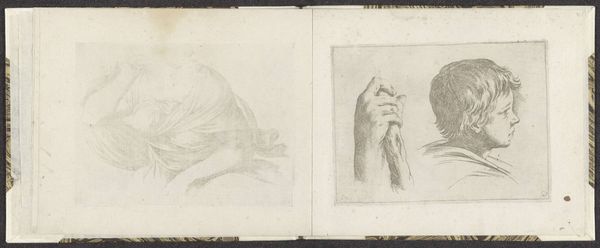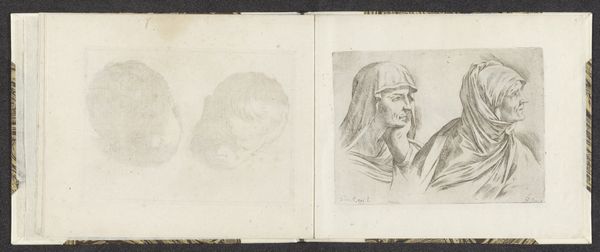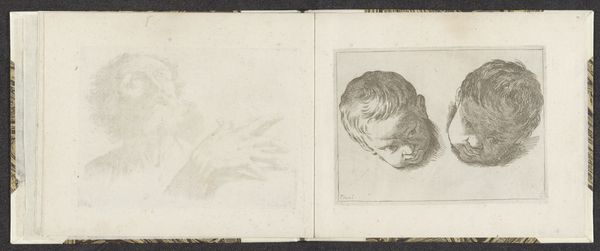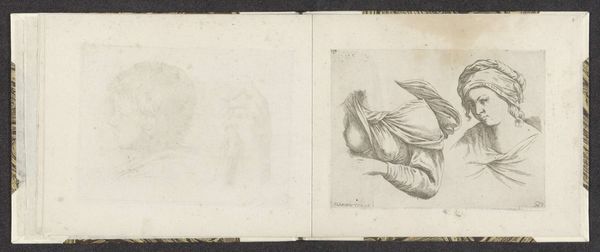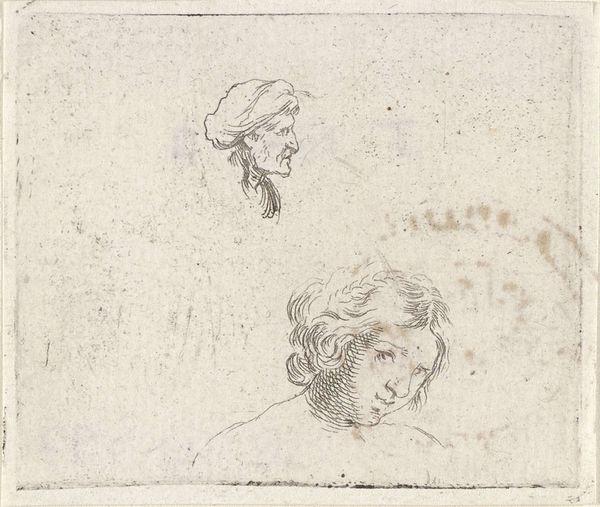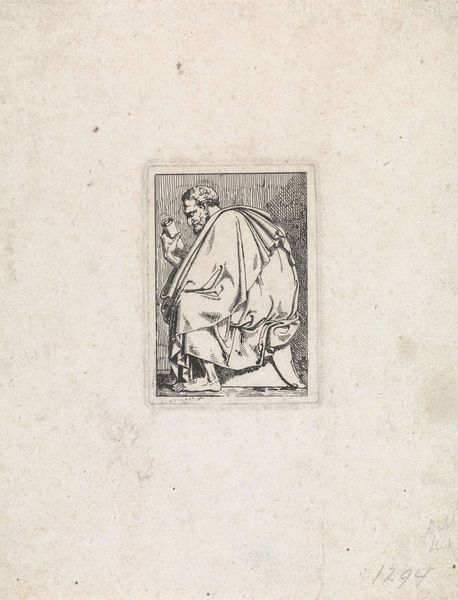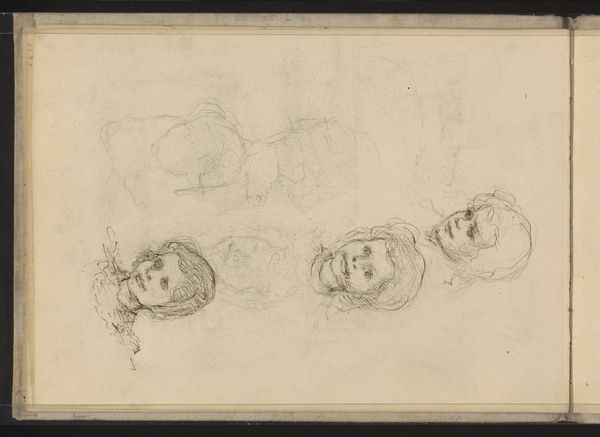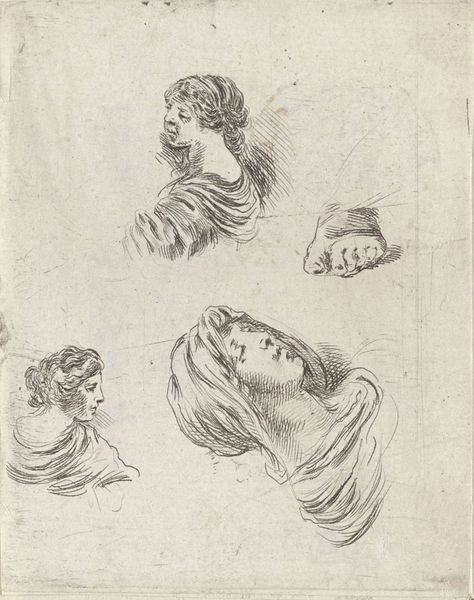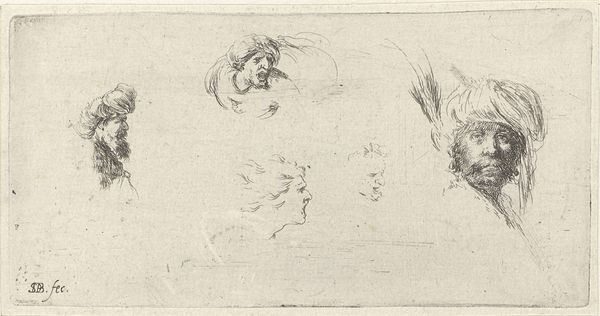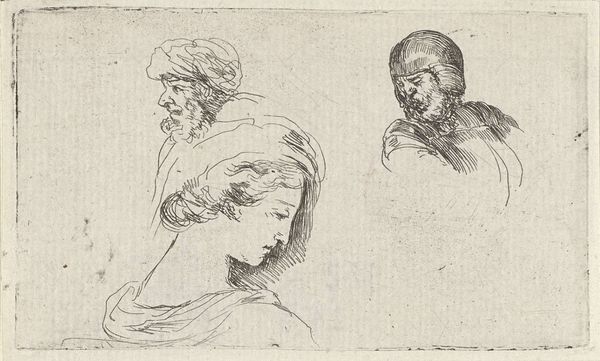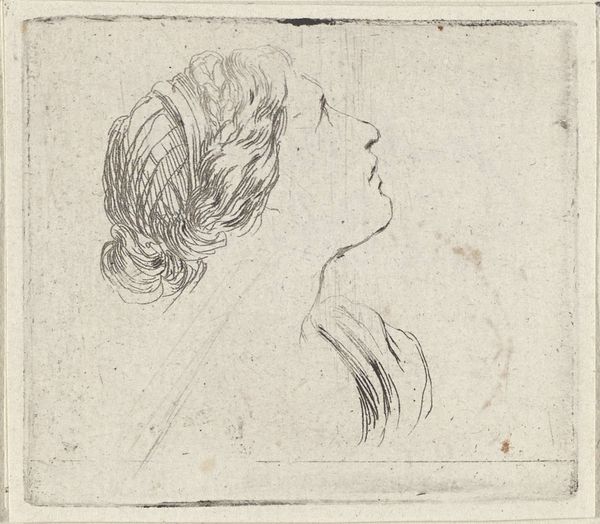
drawing, paper, ink
#
portrait
#
drawing
#
aged paper
#
quirky sketch
#
baroque
#
face
#
sketch book
#
incomplete sketchy
#
figuration
#
paper
#
personal sketchbook
#
ink
#
sketchwork
#
pen-ink sketch
#
line
#
sketchbook drawing
#
storyboard and sketchbook work
#
sketchbook art
Dimensions: height 144 mm, width 194 mm
Copyright: Rijks Museum: Open Domain
Editor: Here we have Giuseppe Maria Mitelli's "Two Women's Heads", dating back to around 1663-1666, rendered in ink on paper. The sketch-like quality of the drawing gives it a very personal feel. What strikes you most about this piece? Curator: I am interested in how Mitelli uses such modest materials, paper and ink, to explore figuration. The sketch-like quality points to the labour involved in artistic production, and suggests this work might be from a personal sketchbook rather than meant for public display. It is about material access and experimentation rather than the achievement of any one finished product. The incomplete character challenges typical notions of 'high art'. Don't you find the aged paper particularly significant in the overall experience? Editor: Definitely. The aged paper contributes to a sense of intimacy and a tangible link to the artist's process. The visible texture hints at a personal and iterative process. But isn't there also an interesting contrast between the "lowly" materials and the almost idealized form of the women’s faces? Curator: Precisely. Mitelli is playing with that boundary, taking what was traditionally considered a 'minor' or preparatory medium and using it to explore classical themes, or idealised human forms. This subverts established hierarchies within the art world concerning value and artistic labour, and suggests the possibilities opened through drawing. Editor: I see your point. Thinking about the paper and ink elevates what I initially perceived as simply a practice sketch to a deliberate act of material engagement and social commentary. Curator: Indeed. What appeared to be just a sketch is, in fact, rich evidence of the artistic production of the time, revealing a good deal about how the boundaries between high and low were being renegotiated through the artist's creative use of humble materials.
Comments
No comments
Be the first to comment and join the conversation on the ultimate creative platform.


